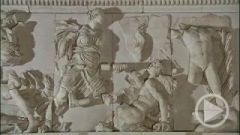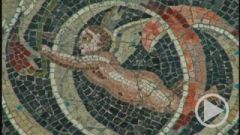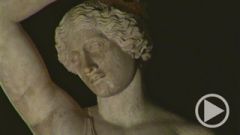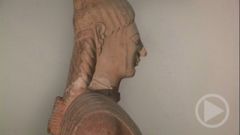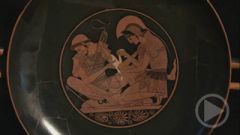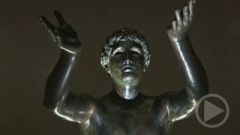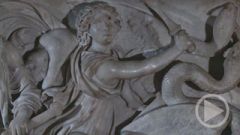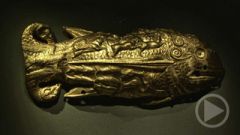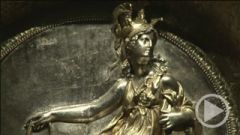- Home
- »
- Germany
- »
- Berlin
- »
- Museum Island
- »
- Pergamon Museum
- »
- The Collection of Classical Antiquities
- »
- The Pergamon Museum - Caesar & Cleopatra
Caesar & Cleopatra
Caesar & Cleopatra
Caesar and Cleopatra were the most famous lovers of all antiquity. The Egyptian queen was just 22 when the Roman ruler arrived in Alexandria in 48 B.C. Cleopatra's brother had banned her from the capital, but she snuck back into the palace hidden in a carpet. Although Caesar was 30 years her senior and already married, they fell in love immediately. He re-established her as queen and stayed in Egypt with her for several months. They took romantic boat rides on the Nile, as shown in the marvellous mosaic from Palestrina that hangs between the two busts.
The bust of Cleopatra was once part of a Hellenist statue. You can see traces of colour on her hair – it was probably painted red and covered in shining gold. The headband-like diadem was brilliant white over the face of gleaming marble, there can be no doubt that the bust was once a magnificent representation of the legendary beauty.
The bust of Caesar emphasizes his assertiveness. Observe the prominent chin; above it thin lips and deep furrows; his broad head and especially his penetrating look. The bust was done long after his death. It was probably also made in Egypt, as evidenced by the material, which is Egyptian slate, but also the hair, which is not sculpted, but engraved.
Neither of the busts is a realistic portrait. Rather they are idealised portrayals of the two rulers. Their love endured until Caesar's death in 44 B.C. Cleopatra then became attached to Marc Antony. But their combined forces were defeated by the Roman armies of Caesar's successor Octavian. When the future Emperor Augustus reached the gates of Alexandria, Cleopatra committed suicide with a poisonous snake.


